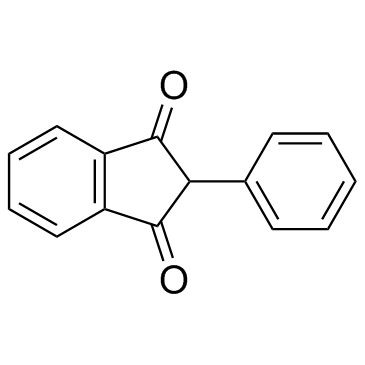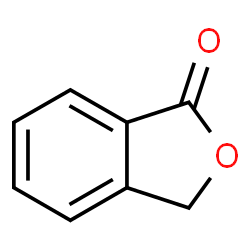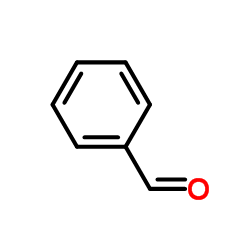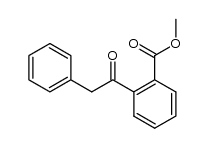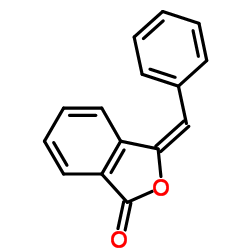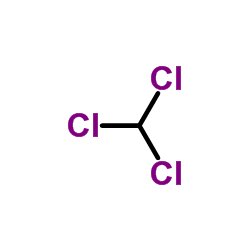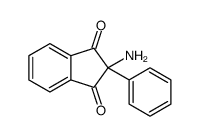1801-20-3
| 中文名 | 2-溴-2-苯-1,3-茚二酮 |
|---|---|
| 英文名 | 2-bromo-2-phenylindene-1,3-dione |
| 英文别名 |
2-Bromo-2-phenyl-1H-indene-1,3(2H)-dione
2-bromo-2-phenyl-indan-1,3-dione 2-bromo-2-phenylindane-1,3-dione 2-Brom-2-phenyl-indan-1,3-dion 2-Brom-1.3-dioxo-2-phenyl-hydrinden 1,3-Indandione,2-bromo-2-phenyl 2-Brom-2-phenyl-indandion-(1,3) |
| 密度 | 1.597g/cm3 |
|---|---|
| 沸点 | 420.3ºC at 760mmHg |
| 熔点 | 106ºC |
| 分子式 | C15H9BrO2 |
| 分子量 | 301.13500 |
| 闪点 | 134ºC |
| 精确质量 | 299.97900 |
| PSA | 34.14000 |
| LogP | 3.35600 |
| 蒸汽压 | 2.84E-07mmHg at 25°C |
| 折射率 | 1.675 |
Synonym: Section 2 - COMPOSITION, INFORMATION ON INGREDIENTS
Risk Phrases: 36/37/38 Section 3 - HAZARDS IDENTIFICATION EMERGENCY OVERVIEW
Irritating to eyes, respiratory system and skin. Potential Health Effects Eye: Causes eye irritation. Skin: Causes skin irritation. May be harmful if absorbed through the skin. Ingestion: May cause irritation of the digestive tract. May be harmful if swallowed. Inhalation: Causes respiratory tract irritation. May be harmful if inhaled. Chronic: Not available. Section 4 - FIRST AID MEASURES Eyes: Flush eyes with plenty of water for at least 15 minutes, occasionally lifting the upper and lower eyelids. Get medical aid. Skin: Get medical aid. Flush skin with plenty of water for at least 15 minutes while removing contaminated clothing and shoes. Ingestion: Get medical aid. Wash mouth out with water. Inhalation: Remove from exposure and move to fresh air immediately. If not breathing, give artificial respiration. If breathing is difficult, give oxygen. Get medical aid. Notes to Physician: Treat symptomatically and supportively. Section 5 - FIRE FIGHTING MEASURES General Information: As in any fire, wear a self-contained breathing apparatus in pressure-demand, MSHA/NIOSH (approved or equivalent), and full protective gear. Extinguishing Media: Use water spray, dry chemical, carbon dioxide, or chemical foam. Section 6 - ACCIDENTAL RELEASE MEASURES General Information: Use proper personal protective equipment as indicated in Section 8. Spills/Leaks: Vacuum or sweep up material and place into a suitable disposal container. Section 7 - HANDLING and STORAGE Handling: Avoid breathing dust, vapor, mist, or gas. Avoid contact with skin and eyes. Storage: Store in a cool, dry place. Store in a tightly closed container. Section 8 - EXPOSURE CONTROLS, PERSONAL PROTECTION Engineering Controls: Facilities storing or utilizing this material should be equipped with an eyewash facility and a safety shower. Use adequate ventilation to keep airborne concentrations low. Exposure Limits CAS# 1801-20-3: Personal Protective Equipment Eyes: Not available. Skin: Wear appropriate protective gloves to prevent skin exposure. Clothing: Wear appropriate protective clothing to prevent skin exposure. Respirators: Follow the OSHA respirator regulations found in 29 CFR 1910.134 or European Standard EN 149. Use a NIOSH/MSHA or European Standard EN 149 approved respirator if exposure limits are exceeded or if irritation or other symptoms are experienced. Section 9 - PHYSICAL AND CHEMICAL PROPERTIES Physical State: Solid Color: Not available. Odor: Not available. pH: Not available. Vapor Pressure: Not available. Viscosity: Not available. Boiling Point: Not available. Freezing/Melting Point: 106 - 107 deg C Autoignition Temperature: Not available. Flash Point: Not available. Explosion Limits, lower: Not available. Explosion Limits, upper: Not available. Decomposition Temperature: Solubility in water: Specific Gravity/Density: Molecular Formula: C15H9BrO2 Molecular Weight: 301 Section 10 - STABILITY AND REACTIVITY Chemical Stability: Not available. Conditions to Avoid: Incompatible materials. Incompatibilities with Other Materials: Strong oxidizing agents. Hazardous Decomposition Products: Carbon monoxide, carbon dioxide, hydrogen bromide. Hazardous Polymerization: Not available. Section 11 - TOXICOLOGICAL INFORMATION RTECS#: CAS# 1801-20-3: NK5147000 LD50/LC50: Not available. Carcinogenicity: 2-Bromo-2-phenylindane-1,3-dione - Not listed by ACGIH, IARC, or NTP. Other: See actual entry in RTECS for complete information. Section 12 - ECOLOGICAL INFORMATION Section 13 - DISPOSAL CONSIDERATIONS Dispose of in a manner consistent with federal, state, and local regulations. Section 14 - TRANSPORT INFORMATION IATA No information available. IMO No information available. RID/ADR No information available. Section 15 - REGULATORY INFORMATION European/International Regulations European Labeling in Accordance with EC Directives Hazard Symbols: XI Risk Phrases: R 36/37/38 Irritating to eyes, respiratory system and skin. Safety Phrases: S 26 In case of contact with eyes, rinse immediately with plenty of water and seek medical advice. S 37/39 Wear suitable gloves and eye/face protection. WGK (Water Danger/Protection) CAS# 1801-20-3: No information available. Canada None of the chemicals in this product are listed on the DSL/NDSL list. CAS# 1801-20-3 is not listed on Canada's Ingredient Disclosure List. US FEDERAL TSCA CAS# 1801-20-3 is not listed on the TSCA inventory. It is for research and development use only. SECTION 16 - ADDITIONAL INFORMATION N/A |
CHEMICAL IDENTIFICATION
HEALTH HAZARD DATAACUTE TOXICITY DATA
|
| 危害码 (欧洲) | Xi: Irritant; |
|---|---|
| 风险声明 (欧洲) | R36/37/38 |
| 安全声明 (欧洲) | S26-S37/39 |
| 海关编码 | 2914700090 |
|
~94% 
1801-20-3 |
| 文献:Mitka, Katarzyna; Kowalski, Piotr; Sulko, Jerzy; Wozniak, Marian; Kloc, Jowita; Chodkowska, Anna; Jagiello-Wojtowicz, Ewa Acta Poloniae Pharmaceutica - Drug Research, 2002 , vol. 59, # 5 p. 387 - 393 |
|
~% 
1801-20-3 |
| 文献:Mor, Satbir; Pahal, Preeti; Narasimhan, Balasubramanian European Journal of Medicinal Chemistry, 2012 , vol. 53, p. 176 - 189 |
|
~% 
1801-20-3 |
| 文献:Mor, Satbir; Pahal, Preeti; Narasimhan, Balasubramanian European Journal of Medicinal Chemistry, 2012 , vol. 53, p. 176 - 189 |
|
~% 
1801-20-3 |
| 文献:Wanag; Freimanis; Sakis Zhurnal Obshchei Khimii, 1957 , vol. 27, p. 2509,2512 J. Gen. Chem. USSR (Engl. Transl.), 1957 , vol. 27, p. 2567,2570 |
|
~% 
1801-20-3 |
| 文献:Nathanson Chemische Berichte, 1893 , vol. 26, p. 2576 |
|
~% 
1801-20-3 |
| 文献:Nathanson Chemische Berichte, 1893 , vol. 26, p. 2576 |
|
~% 
1801-20-3 |
| 文献:Nathanson Chemische Berichte, 1893 , vol. 26, p. 2576 |
| 上游产品 8 | |
|---|---|
| 下游产品 5 | |
| 海关编码 | 2914700090 |
|---|---|
| 中文概述 | 2914700090 其他酮及醌的卤化、磺化衍生物(包括硝化和亚硝化衍生物). 增值税率:17.0% 退税率:9.0% 监管条件:无 最惠国关税:5.5% 普通关税:30.0% |
| 申报要素 | 品名, 成分含量, 用途, 丙酮报明包装 |
| Summary | HS: 2914700090 halogenated, sulphonated, nitrated or nitrosated derivatives of ketones and quinones, whether or not with other oxygen function Tax rebate rate:9.0% Supervision conditions:none VAT:17.0% MFN tariff:5.5% General tariff:30.0% |


